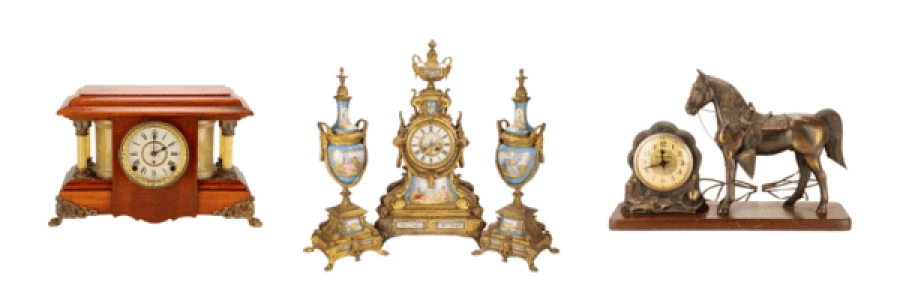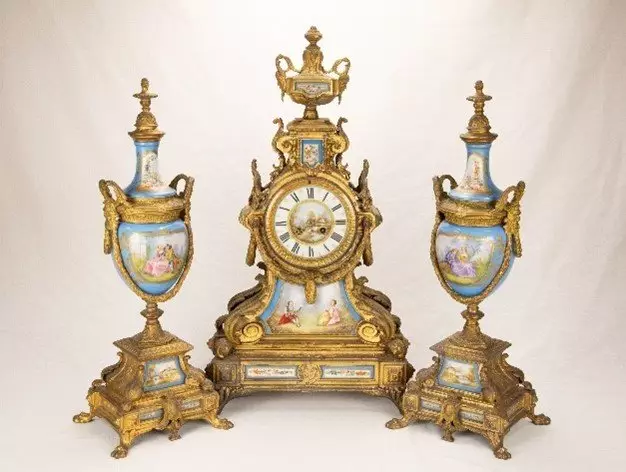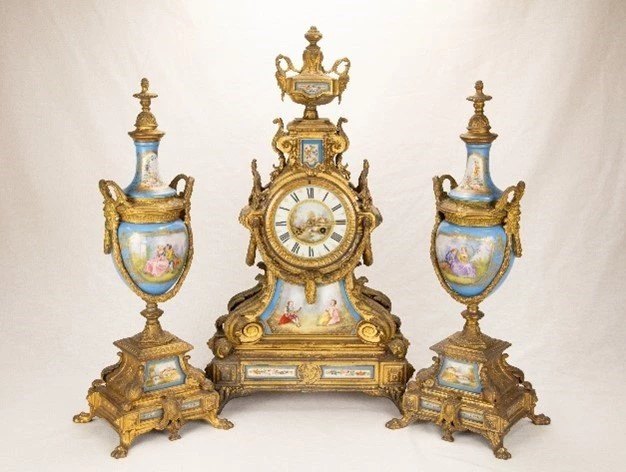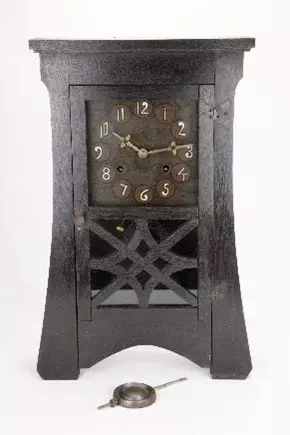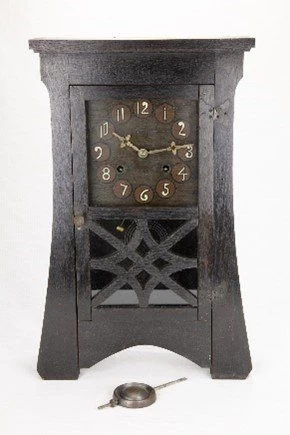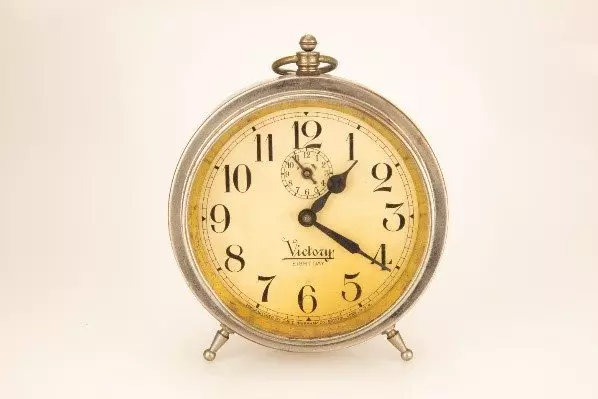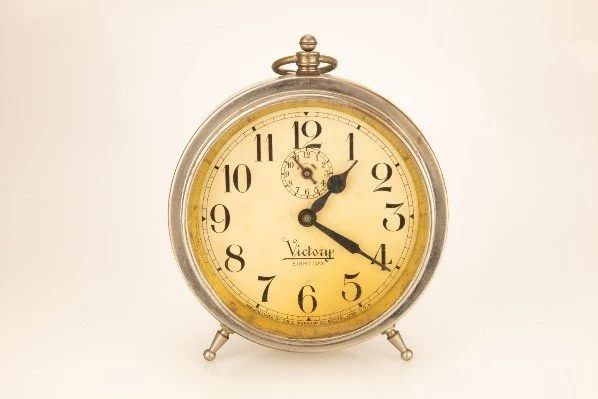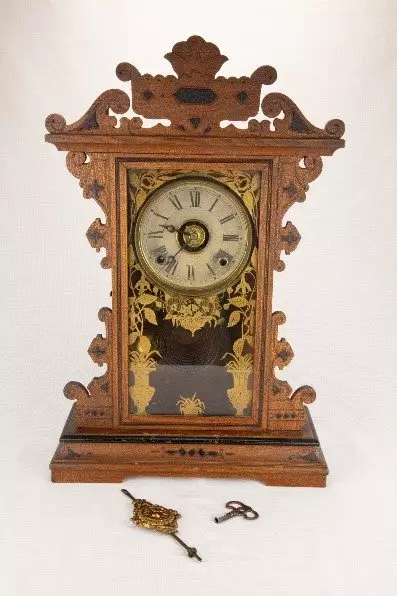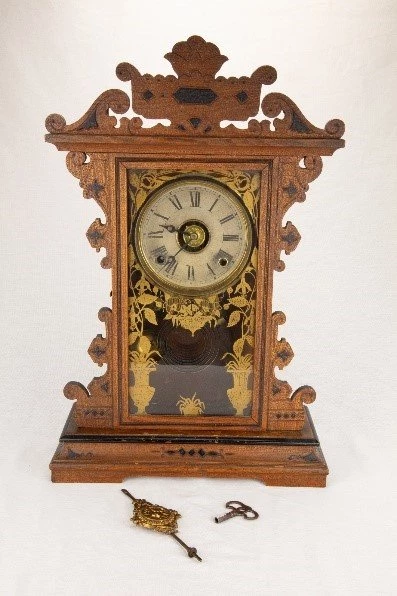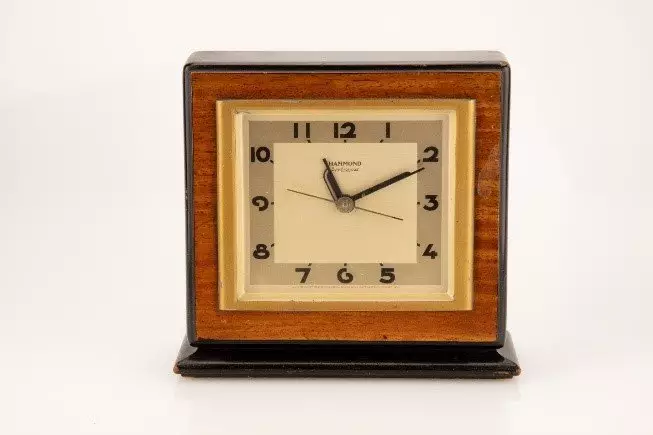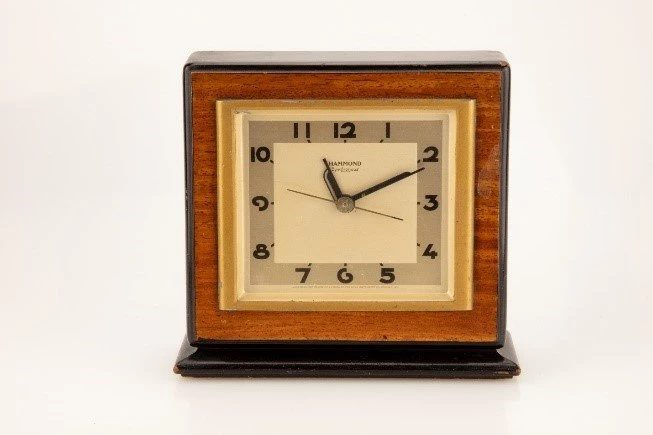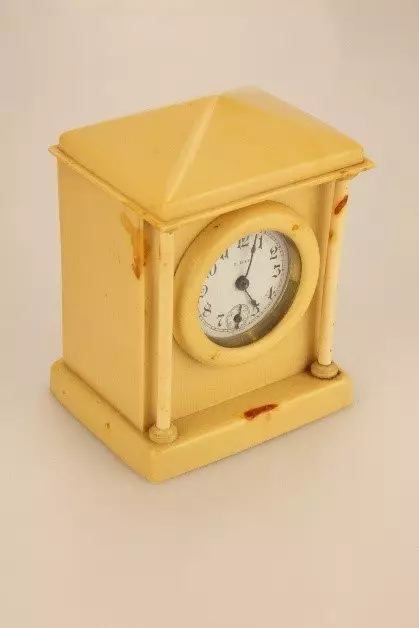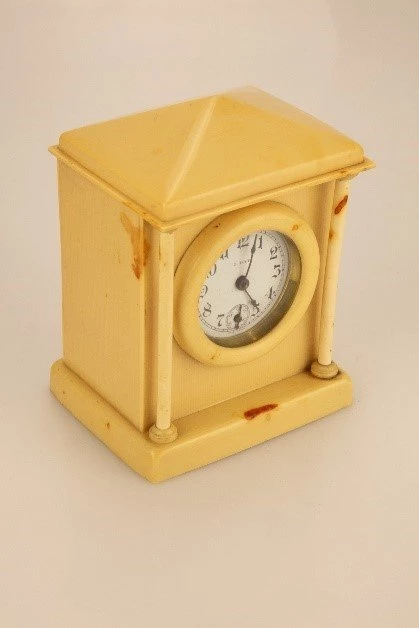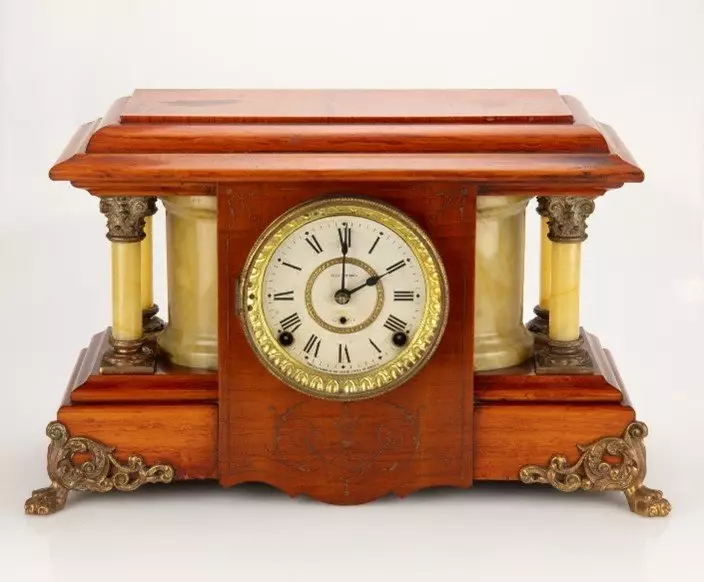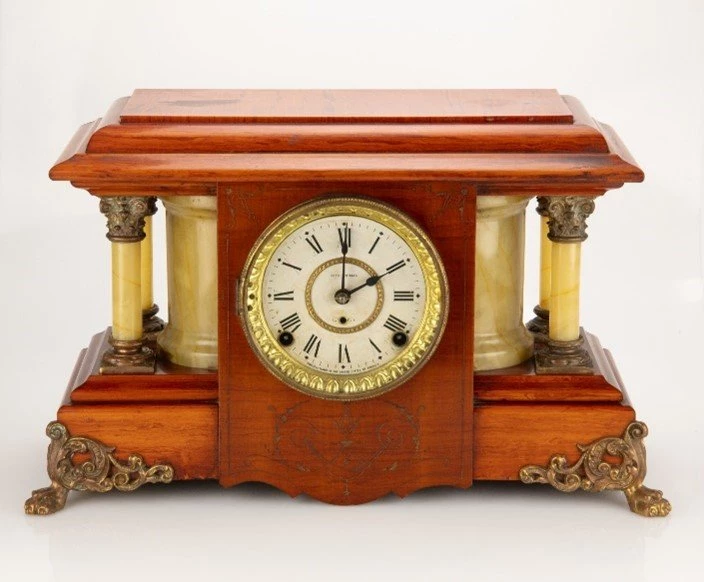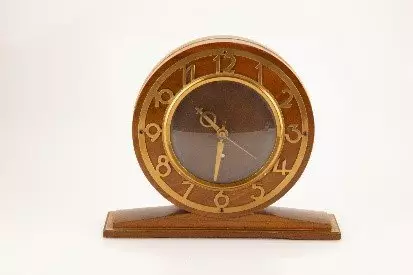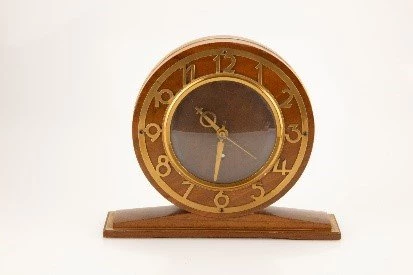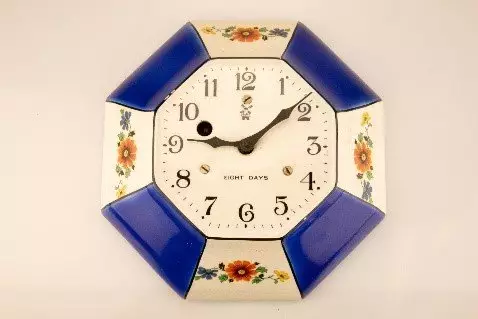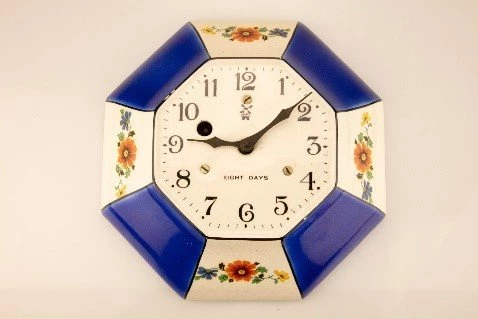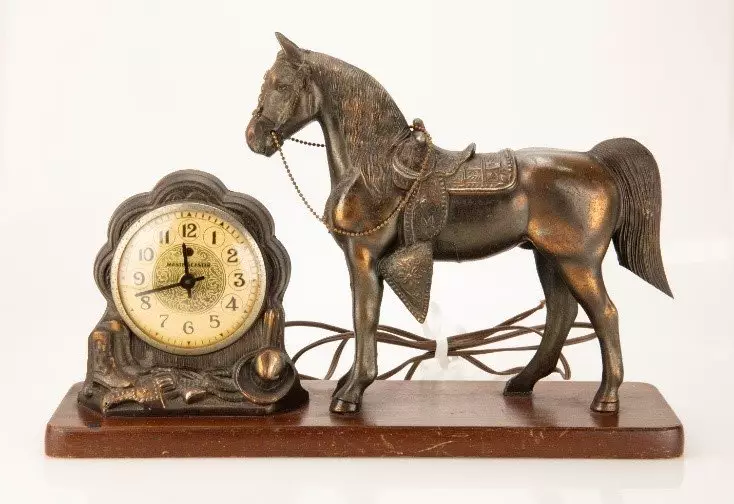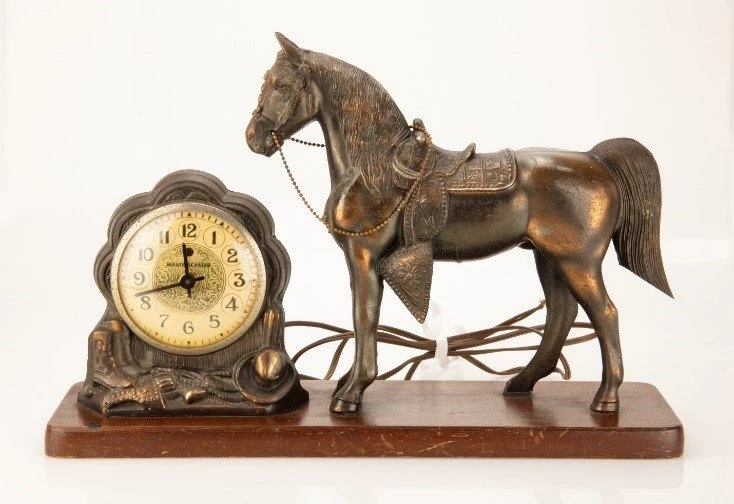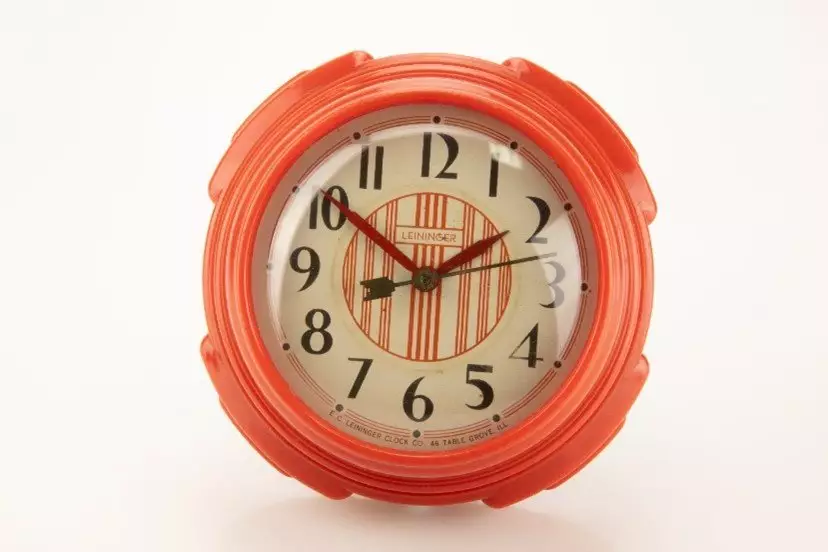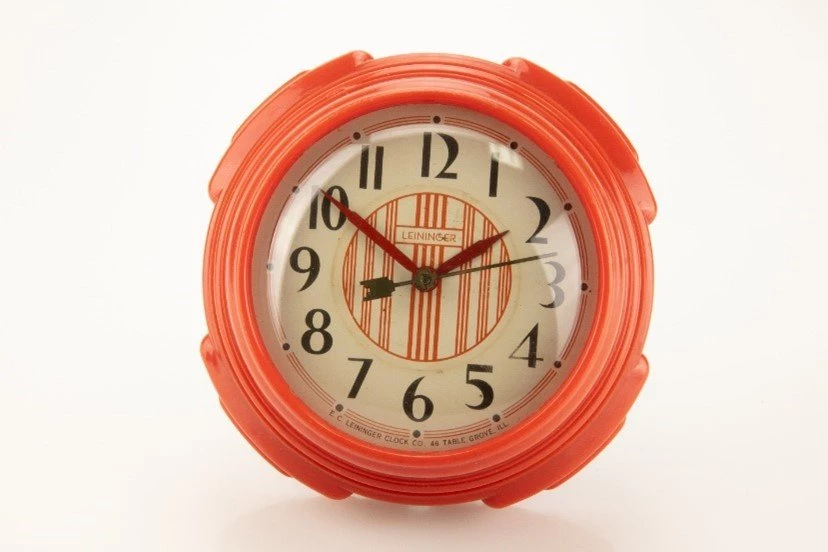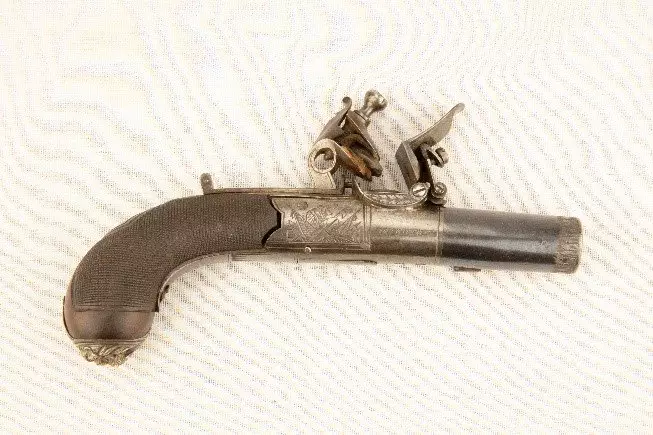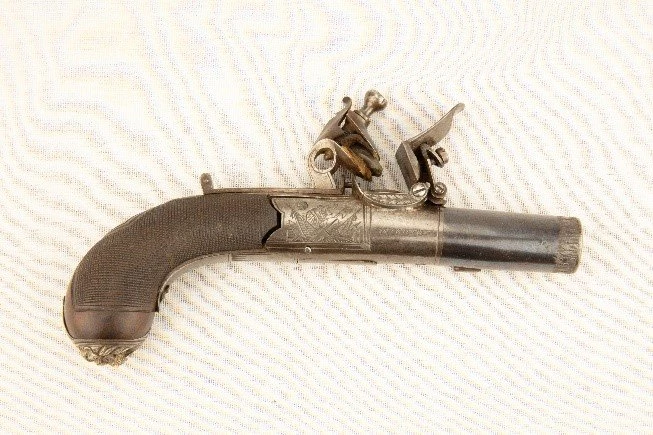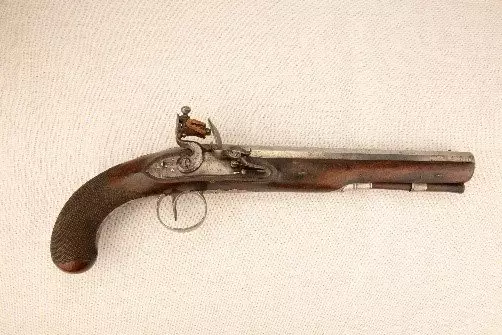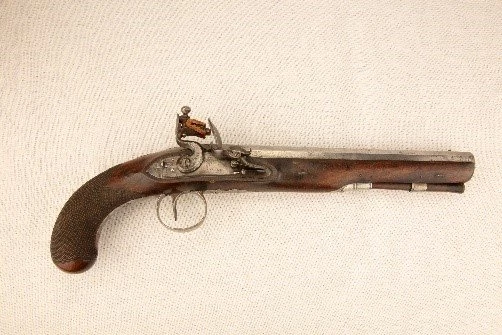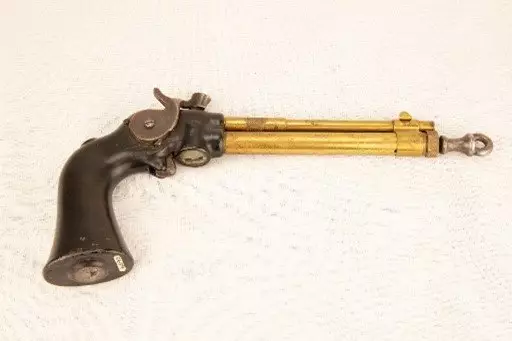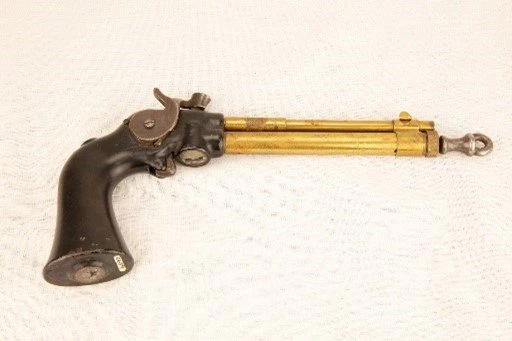The re-envisioned Merwin Gallery is a non-static object display space designed to increase the visibility and accessibility of the over 18,000 objects in the Museum’s collection.
Objects are routinely rotated in and out of the space, and this latest curated swap comes just in TIME for spring! To explore the latest addition, visit the Merwin Gallery on the third floor of the Museum or continue reading below. Each object is listed with its accession number (which can be used to search for it on the Museum’s Online Object Database) followed by a description, and a photo of the object.
96.102.042.a-c
Lewis and Helen Davis Stevenson received this clock as a wedding gift from an unknown U.S. Senator, who was an associate of Lewis' father, Adlai E. Stevenson I, who at the time was Vice President of the United States under Grover Cleveland.
When Lewis and Helen moved into their home at 1316 E. Washington St., in Bloomington, Illinois, the clock and its matching urns were placed on the mantel of the fireplace in their living room. It remained there after their deaths. Their daughter Elizabeth Stevenson Ives took over the home, and it was still in this location when she died.
773.466
William (1874-1959) and his wife Emma Wissmiller Brigham (1877-1950) used this San Luis model Mission-style clock, which sat on the mantel of their home at 1801 N. East Street in Bloomington, Illinois. It is believed that the clock was purchased through the 1921 Montgomery Ward mail order catalog. The clock was manufactured by the New Haven Clock Company.
803.806
This alarm clock was purchased at a secondhand store by Martin Wyckoff, who used it in his Normal, Illinois, home. Manufactured by the Elias Ingraham Company in Briston, Connecticut, when wound with one of its keys, the clock would run for eight days. Martin furnished his home with only vintage furniture and household items and typically only wore vintage clothing.
813.865
It is unknown who first owned this oak-cased clock, which when wound, ran for eight days, and chimed every half hour. It may have been Rose Lancaster Stubblefield Hensel (1899-1985), who was its last owner. A native of Connecticut, she migrated to McLean County with her parents, William and Lucy Deck Lancaster, who could have owned it before Rose. It could also have belonged to the parents of Rose's first husband Oren Stubblefield, or the parents of her second husband William Hensel. While we know Rose was its last owner, we do not know for certain who its original owner was.
833.992
This Hammond wood-cased clock was used in the home of Delmar (1900-1983) and Elizabeth Anders Wyckoff (1905-1960), who made their home in Normal, Illinois, when Delmar took a job as a candy salesman in 1926. They met and married in Delevan, Illinois, where Delmar ran a restaurant. They had one son, Martin.
873.1592
Owen (1865-1944) and Johanna O'Neil O'Hara (1867-1954) used this clock in their rural Hudson home. A native of Ireland, Owen immigrated to the U.S. with his parents in 1881 and settled in Hudson Township, where he farmed with his father and lived with his family. He met Johanna O'Neil in Bloomington, and they married in 1886. They farmed and raised seven children: Veronica, Lillian, Kathleen, William, Marguerite, Helen, and Elizabeth.
873.1643
This beautiful oak-cased mantel clock, with celluloid columns, and decorative brass feet, came from the Mildred Dillingham Hazle (1905-1987) home in Bloomington, Illinois. The Seth Thomas Company model 295 clock dates to about 1885, which means Mildred was not the original owner. In instances like this, the original owner would be impossible to determine. Mildred might have purchased it from an antique shop, as she was an avid collector of glass and ceramics. Alternatively, it could have been passed down through her family or from her husband's family.
913.2111
This Art Moderne-style electric clock, marked Seth Thomas model 295, came from the home of Harry (1906-1991) and Jean Soper Harwood (1914-1972), who made their home at 1521 East Grove Street. Both natives of Bloomington, Illinois, they married in 1942 and had two sons, Harry A. and Richard S.
935.379
The history of this kitchen clock is unknown, except that it was likely purchased at the Bloomington Sears Roebuck and Co. store on Center Street (where Fox & Hounds is currently located) or through their mail-order catalog. It is showcased on page 561 of the company's 1931 spring and summer catalog.
2002.25.39
Robert (1918-2001) and Evelyn Reynolds Williams (1923-1999) used this cowboy-themed clock in their Downs home, possibly placing it on top of a console television set. But when they moved to Normal, Evelyn decided it was out of style. The couple had three daughters, Julie, Janet, and Carol, who likely agreed with their mother, and so it was relegated to Robert's workshop in the garage.
2002.72.23
Manufactured by the E.C. Leininger, the Chicago based clock company specialized in Art Deco Style clocks. This one hung in the kitchen of Wayne and Ruth Coomer Shoemaker's rural farm home in Randolph township, McLean County, Illinois.
796.660
According to the donor, this flintlock pistol, marked "Tocknell, Brighton," was used by James J. Gibbs (1810-1877), who deserted from the British Navy in Baltimore, Maryland, during the War of 1812.
This colorful family tale could not, however, be substantiated as Gibbs was a toddler at the time of the war and still living in England with his parents. They immigrated to the U.S. around 1818.
James had two older brothers who were old enough to have served in the British Navy. According to John Gibbs' (1794-1855) naturalization papers, he arrived in the U.S. in 1830, so it could not have been him. George Gibbs (1792-1832) arrived with the family in 1818.
The family settled in Baltimore Maryland, where the desertion was reported to have occurred. The brother's records could be wrong, or the story could be fabricated. Like so many stories passed down through generations, details become less clear.
James Gibbs eventually settled in Mt. Hope Township in McLean County, Illinois, and became the owner of the pistol, in addition to another, when his father, who was living in Menard County, Illinois, at the time, died. It was passed down several generations, eventually becoming the property of Clarendon Kinsey (1902-1999), his great-grandson, who also lived in Mt. Hope Township.
796.661
It is believed that this British-made pistol, marked "Knubly, London," was originally owned by William Gibbs (1766- 1851), who brought it with him when he sailed to the United States from his home in England with his family in 1818. They lived in Baltimore, Maryland, then settled in Menard, County Illinois, where they farmed. After William's death in 1851, the pistol was passed to his oldest and closest living son, James J. Gibbs (1810-1877).
856.1574
Owned by John F. Lewis (1862-1912), the proprietor of the Bloomington furniture store Lewis & Wilson, at the time of its donation, we know little about the history of this interesting piece of Americana. An air target pistol designed and patented by W. H. Hawley in 1869, it shot small darts and would have been used for target shooting. It was manufactured by the Snow & Cowe Co. of Connecticut and was widely marketed after the Civil War. The low-cost pistol was a popular and inexpensive form of entertainment.
